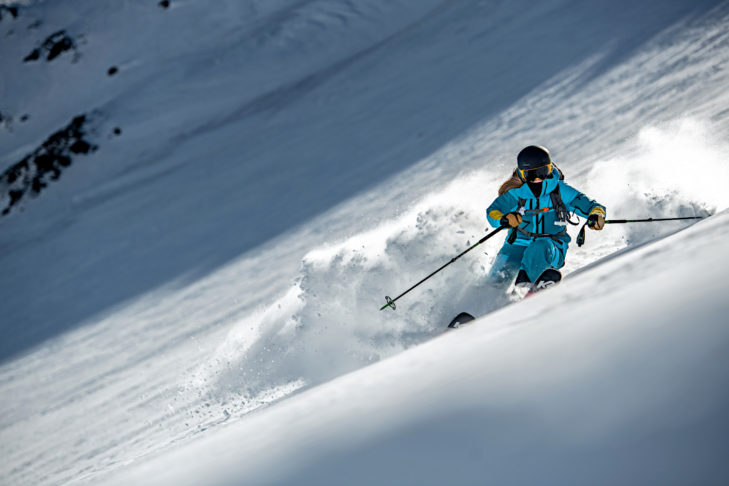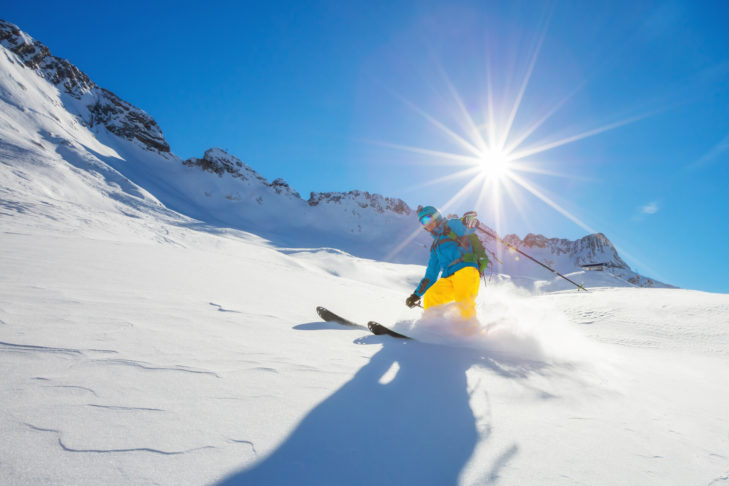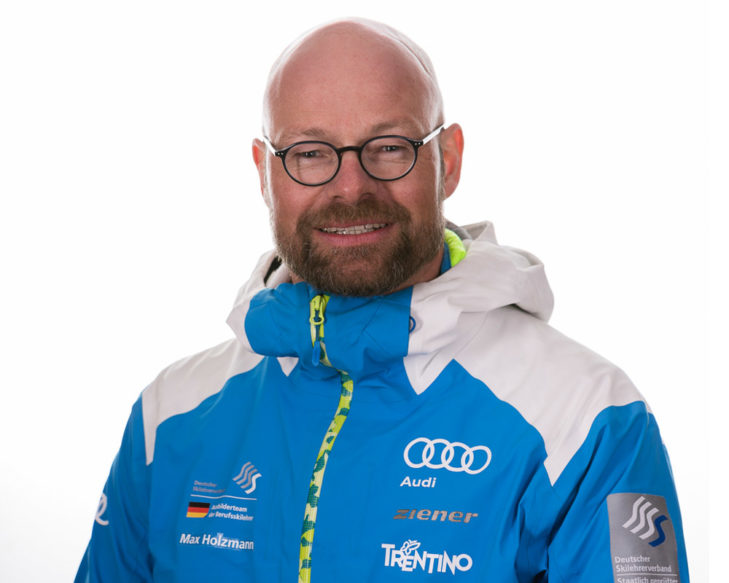A big part of skiing is about technique and tactics. Many winter sports enthusiasts ask themselves: How do I ski in deep snow? SnowTrex discussed this complex issue with Max Holzmann, chief instructor at the German Ski Teacher Association (Deutscher Skilehrerverband, DSLV). The state-certified ski instructor gives valuable expert tips on safe off-piste skiing.
Assessing danger correctly
If you want to go off-road, you should focus on the objective dangers and not “act on instinct”, says Holzmann: “Objective dangers in particular play a major role when it comes to skiing off-piste. The greatest possible objective danger is an avalanche. However, a snowslide may also be caused by skiers themselves, which is why one has to be extra careful off-piste.” Up-to-date avalanche reports help in assessing the danger. They are available on a ski area’s website and via avalanche apps, but info panels and warning signals also show the avalanche risk level right in the ski area. After all, every slope has to be assessed separately.
Recognising ski spaces
It is especially important to be able to differ between the following two areas: secured and unsecured skiing space. “Secured skiing space is always described, marked, and characterised as safe by the ski area’s operator. As off-piste skiing is very popular, there are also secured off-piste areas: Unprepared pistes one can use for off-piste skiing, but which are still in a secured skiing space. These areas only have a low risk of avalanches.” The mountain rescue service is always active and ready within a secured skiing space. In unsecured skiing spaces, however, reaching the accident site and rescuing victims is more complicated.
One should always read the piste map carefully and pay attention to the markings. “Ski routes or variants are not necessarily in a secured skiing space. However, whenever a ski route is mapped in the piste plan and marked as a piste, mountain security controls the area and is active there. A dotted line shows an unsecured ski route, a sold line marked in black (sometimes also with a number) is usually in a secure skiing space, but it is not a prepared piste.”
Emergency equipment is mandatory
Free skiing space is unsecured terrain, you ski at your own risk and on your own responsibility. The rule here is: Always observe all risk management points. “Before you set off, you must always first assess the avalanche risk and pack the appropriate equipment. As soon as we as ski instructors leave the piste and the prepared ski area, we always have the emergency equipment with us. Yes, it’s called emergency equipment. To raise awareness, I always make the terminology clear: it’s not safety equipment, it’s emergency equipment. Safety only comes from assessing the situation, not from the equipment!” The basic equipment must include an avalanche transceiver, a probe and a shovel.
Guarantors’ responsibility
Holzmann also has legal advice regarding the aspect of security: „In open, unsecured skiing space, a careless skier can also behave in a grossly negligent manner. When skiing in a group, the person who has the most experience is responsible for the rest of the group. That means he has a guarantor’s obligations. He can bring along friends, ski unsuitable descents, trigger an avalanche and thus compromise their own and others’ safety. As soon as such grossly negligent behaviour can be proven, the guarantor is fully liable.
Deep snow skiing technique
Once you are aware of the risks on the mountain and have thoroughly checked the terrain and the avalanche report, you can finally set off. But how do you ski in deep snow? As unique as off-piste skiing is, the same technical rules apply as for normal piste skiing, namely the coordination of the three important elements: track – speed – movement. It is important to keep your balance, stay in the chosen track and not accelerate beyond a controllable speed. Above all, coordinating your movements with the course of the turn is the be-all and end-all when skiing in powder.
Entire textbooks have been written about the art of deep snow skiing. Of course, there is not just one golden rule for skiing in powder. But there are a few valuable tips on technique that are worth remembering. Ski instructor Holzmann advises a centred position on the ski in coordination with the track system: “Don’t take too large an angle, but rather ski with a fall line orientation. At a certain speed, the skier gains momentum, which helps with turning. Here too, of course, the skiing must remain controllable. Those who master the timing of the turn will experience pure joy in deep snow.”
Deep powder snow skiing should not be exhausting, Holzmann stresses. “Fun in the powder is created when you make the right movements in the right moment. The up-and-down and back-and-forth movements when taking turns are significant. Stretching for relief, flexing for steering, stretching again for relief. Added to that is the classic ski-turning. A constant switch from tension to relaxation helps your muscles to work for a very long time. With the right motion sequence at the right time you can ski deep powder snow for several kilometres.”
Broad skis are the key
Another effective aid in deep powder snow skiing is the equipment. “Current deep powder snow skis with mid-widths of 100 mm and more simplify skiing immensely. Once you add active movement, skiing curves in the deep snow is made easier.” When it comes to mastering deep powder snow, Holzmann is sure: “The greatest efficiency comes from the equipment.”
Summary
Every time before enjoying off-piste fun, the area and the most recent avalanche report must be checked. Additionally, every off-piste skier must bring the correct emergency equipment. In deep powder snow, broad skis cause a higher buoyant force, and the momentum caused by high speed makes taking turns easier. With the right timing in taking turns and dynamic up-and-down movements, deep powder skiing over several kilometres is no problem.
Our DSLV expert
Max Holzmann is a state approved ski instructor and executive board of professional training in the German Ski Teacher Association (Deutscher Skilehrerverband, DSLV). His areas of responsibility are the contents of training courses, the respective assessment levels and levels of difficulty in all training stages from level 1 to the state approved ski instructor exam in the disciplines motor skills, methodology, and theory.





